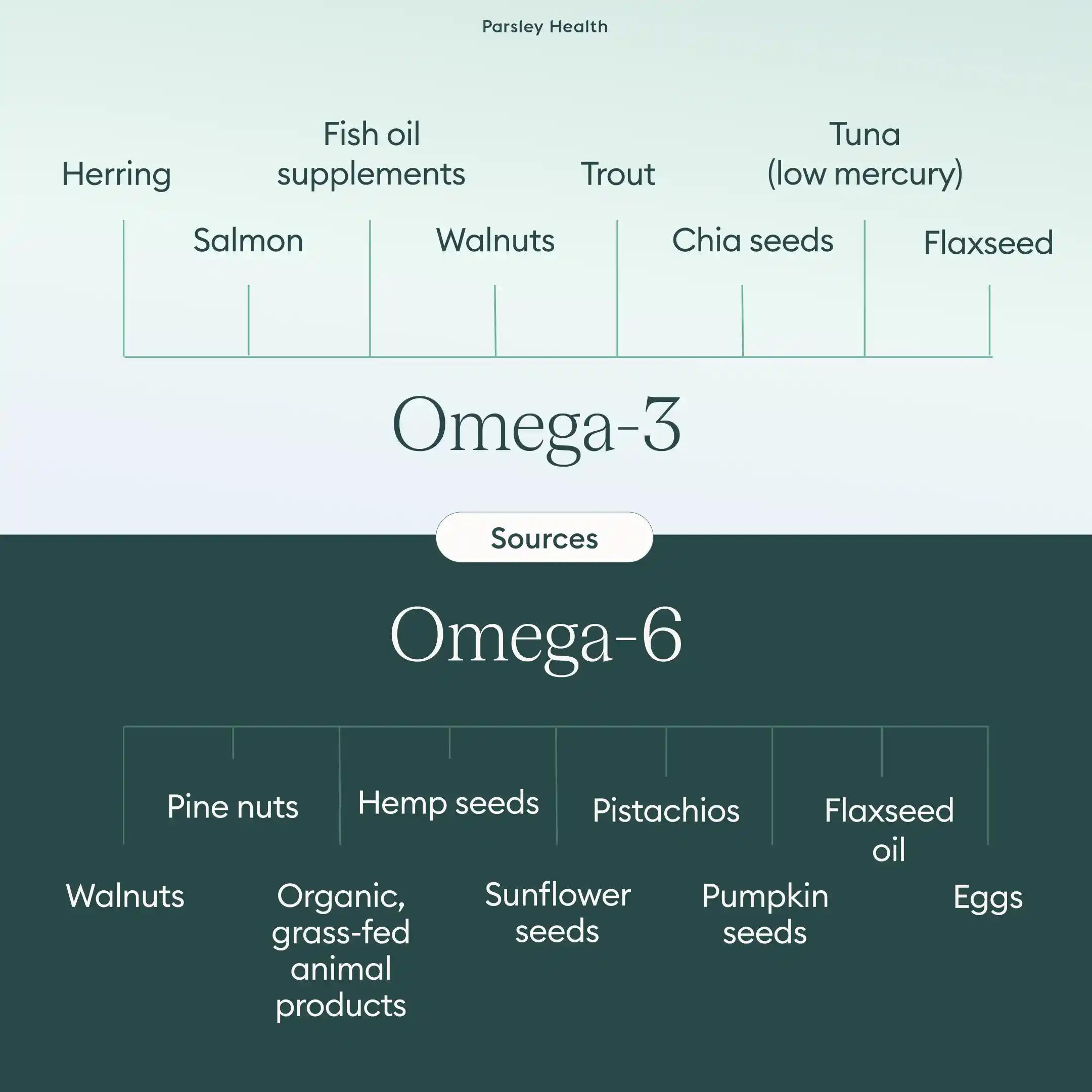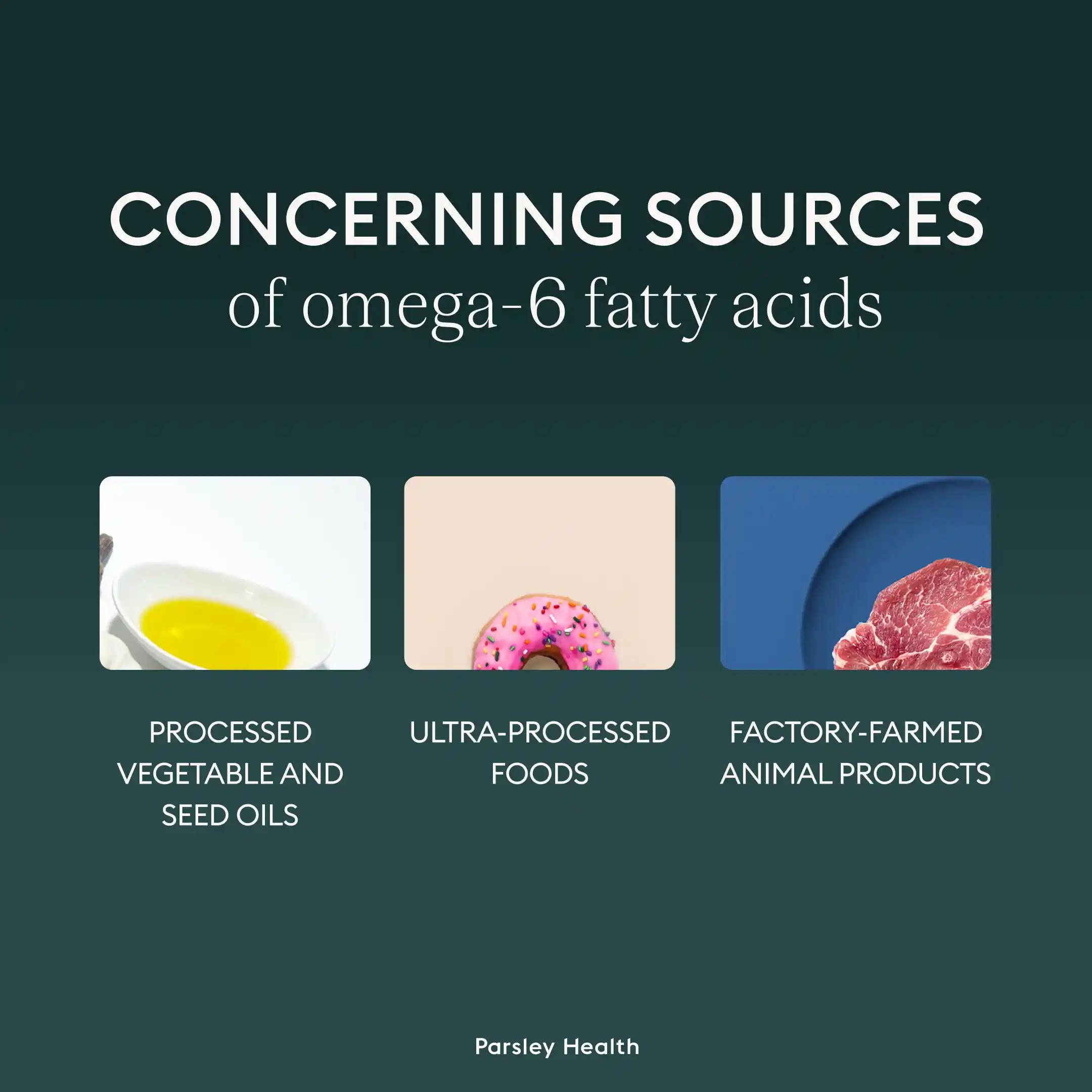This article contains additional reporting by Jennifer Chesak.
Omega-3 vs omega-6 fatty acids: Here we provide a head-to-head comparison since these essential nutrients are not created equal. In a nutshell, omega-3s tend to be anti-inflammatory, while omega-6s tend to drive inflammation. Yet we tend to eat more omega-6s in our diet.
Omega-3 fatty acids have been researched for their cardiovascular and neurological benefits while omega-6 fatty acids have been linked to diseases, such as heart disease, autoimmune disorders, and inflammatory bowel disease (IBD).

Our bodies can’t make these polyunsaturated fatty acids, so we must get them from other sources, either through food or supplementation. But if omega-6 fatty acids are essential nutrients, can they be so detrimental to our health?
Well, as with many things in life, too much of something can sometimes be problematic. This is especially true when it comes to omega-6 fatty acids. We need balance.
By simply being aware of what foods in your diet contain omega-3s vs omega-6s, you can maintain a healthy ratio of the two.
What are omega-3 fatty acids?
Omega-3 fatty acids dilate the blood vessels and combat inflammation. A diet rich in omega-3s has been associated with a lower risk of diseases, such as atherosclerosis (hardening of the arteries), obesity, and Type 2 diabetes.
The three most important omega-3s are alpha-linolenic acid (ALA), eicosapentaenoic acid (EPA), docosahexaenoic acid (DHA).
Sources of omega-3 fatty acids
- salmon
- tuna (work with your doctor for sources that ensure high omega 3s and lower mercury)
- herring
- trout
- walnuts
- flaxseed
- chia seeds
- fish oil supplements




